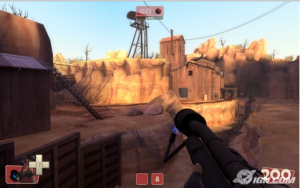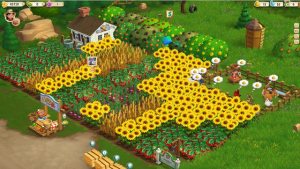An interesting part of Game-Wisdom is how we’ve really become more of a middle-ground between developers and fans/enthusiasts. Thanks to the site, I’ve been given access to talking to developers directly about their game designs and implementation of mechanics; allowing me to look at design a lot deeper than most people. When you read forums and message boards enough, you tend to hear fans say the same misunderstandings about making games, and for today’s post, we’re going to talk about some of them.
Game development is a very tricky process and one that is not completely understood by a lot of people. The problem is that there are very few credible and accurate sources on the internet, a lot of places tend to theorycraft without being able to talk to the designers. This is where I can come in and talk about some of the misconceptions about making a game and what I’ve learned from speaking to developers over the years.
1. “Just add Multiplayer”
Time after time, we see fans clamoring for multiplayer to be added to any number of games; be it local or online co-op and competitive modes. The reason is quite simple: Multiplayer is fun for a lot of people and it greatly extends the shelf life of a video game.
On the other hand, multiplayer of any kind is very difficult to implement, and more importantly, get right. Developers in the past have complained about being forced to add in multiplayer to a title that doesn’t need it; such as the Spec Ops the Line example and calling it a “cancerous growth.”
Then there is the greater complexity that goes with it. Games with any kind of multiplayer mode are more complex and harder to design. Even for just simple local co-op, you need to design a second interface and UI, redesign the AI and stages to compensate, and of course make sure your engine can handle the additional strain.
Now I know that people will point out that there are a lot of simple titles with multiplayer easily added, but there are two important details. First, a game that is designed from the start for multiplayer is infinitely different than a game that wants to add it later on. Any kind of grand system changes to an already completed title requires work to make sure that the existing design can be changed. This is why some of the best multiplayer games out there are ones that were designed from day one to be multiplayer experiences: Team Fortress, Left 4 Dead, Call of Duty, League of Legends and so on.

building a successful online infrastructure is done best during the development of the game, not after it’s finished
Second, the more complex the title is, the harder it is to translate those mechanics to multiplayer. Many singleplayer games are built around systems and rules that only work because the game is being played with one person.
Games with elements like pause-able real-time controls, special event triggers, tactical combat and any systems designed to focus on just one player are examples of this.
Again, these are games that were built as a singleplayer experience first and foremost; adding in multiplayer systems would be very difficult to the point of impossible.
There is just a lot more work that goes into making a good multiplayer mode. Also impacting the difficulty is when online becomes involved. Setting up an effective online service for your game is tough to the point of impossible if you’re trying to build an infrastructure after your game is finished. Now you have to deal with peer to peer setups, dedicated servers, latency issues and more, and the more players you have at one time, the more complicated and costly all that becomes.
Speaking of costs, that’s a good segue way into another common misconception.
2. “You would add X for more money, so you’re greedy”
The push and pull between art and product when it comes to game development is always tricky, and one common complaint from fans is when the product gets in the way of the art. You’ll usually hear this when someone is arguing for some kind of addition to a game (and of course multiplayer being an example,) that the developer won’t add something that the fans really want, because it’s all about the money.
The fact of the matter is that it is all about the money. At the end of the day, you’re not going to survive in the Game Industry if you’re not bringing in more than what you’re putting out. No matter how great a game is (with exception to long-term multiplayer,) there comes a point when it’s just not worth the money to keep putting work into it.
I know that sucks for both the fans and the developers, but one game is not going to give you money forever. Fans are right about one thing: It would be easy to add something if you had all the money in the world. Hell, I bet given infinity dollars, you could turn Super Mario Bros 1 into a World of Warcraft-styled MMO, but no one has infinite amounts of money.
The sign of a good game designer, and more importantly, the sign of a good studio owner, is knowing how long to support a project and when it’s time to pack it in. If a game is still showing signs of interest and earning money, then if you have the option to make more content, it could be a worthwhile investment. On the other hand, if no one has bought your game in months and everyone has moved on to something else, spending a year working on more content may not be the best use of your time.

The decision to keep supporting a game comes down to the income coming in and the fan base’s interest; you need both in order to justify the work
Of course, it’s important to mention that different studios and games can be different in this regard. Arcen Games has been constantly supporting AI Wars with more content for its fanbase for more than 5 years as it’s their biggest seller, and of course Team Fortress 2 is over 7 years now.
Finally, our last point comes to another major misconception made worst by the lack of information out there.
3. “If they did X, why can’t you?”
Game development is one of those processes that there really isn’t much information on from the outside; it’s one of those things where you’ll know it after you’ve done it. For everyone else, it’s hard to properly explain what actually goes into making a game.
Just as how two games are different from each other, so are the processes and work that goes into them. In many industries, there is some level of standardization between companies; every car needs a steering wheel for example. But in game development, two platformers can be vastly different in their design and development process; no one can say that Shovel Knight behaves the same as Sonic the Hedgehog.
Compounding matters has been the race to the bottom that has taken hold in mobile development and making its way through PC and Indie developers. With many companies trying to make their game as cheap as possible, it’s further confusing the market and fans as to how much a game is actually worth.
This can lead to fans questioning why games are either priced so much or why certain features aren’t in a specific title. The bigger problem is when fans try to explain why one game should be worth less, because another game is cheaper. Many fans will say that games that are worth $5 or less are making a lot of money, but there is the cost of development to consider.

The rush towards free to play and devalued games has led to a market that is unaware of the pricing and development of games
Amazing games aren’t just made within a month or two, but require a lot of man hours and money in order to create something spectacular. All that time spent developing equates to development costs that must be covered in order for the studio to actually earn any money.
There are cases where a game earns essentially its funding and then some through Early Access, such as Prison Architect, but these are exceptions and not the rule.
There is no easy fix for this one; while it’s great that indie developers are more transparent about their designs, there needs to be more awareness given to the work that goes into making a video game.
Until that happens, we’re still going to see people say that video games should only be $10 or less and that two strategy games should have the same exact features and pricing.
Understanding Game Development:
These are just three issues, but I’m sure there are a lot more out there. If you have any other points that you see fans mess up about, feel free to leave them in the comments below. Getting behind the scenes and talking about what makes game designers and game development tick is one of the primary goals of Game-Wisdom, and why I love doing what I’m doing.
If you enjoyed this post, please consider donating to the Game-Wisdom Patreon Campaign. Your donations help to keep Game-Wisdom going and allow me to keep putting out great content.


